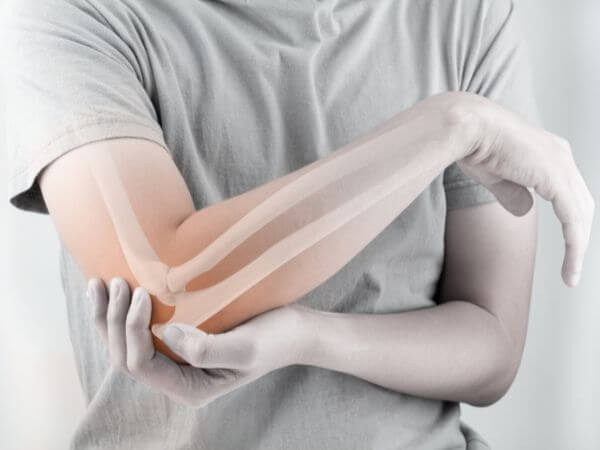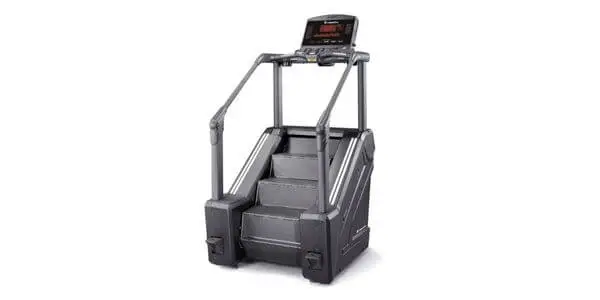I’ve been quite apprehensive about trying a Stairmaster. My mind was torn between two images: Rocky climbing those stairs at the Philadelphia Museum when he was training and Sisyphus trying to push his massive boulder up the cliff.
And just like one really can’t imagine Sisyphus happy (it’s okay to read Camus, but look up the memes), I also couldn’t imagine happily climbing away on a Stairmaster.
The problem is, those Stairmasters in my gym are really right in front of me each time I jump on the treadmill or the elliptical.
And people actually seemed to hog them.
One of the women I always met in the locker room seemed to have the same schedule as me; we preferred the same classes and went swimming at about the same times. We also had almost the same cardio days.
But as I was going to the treadmills, she was heading towards the Stairmasters.
After a few weeks, I couldn’t help but notice her impressive before and after progress. Not only was she slimmer, but she was also doing more laps at the swimming pool and had overall more stamina for our group classes.
I had a notion that maybe the Stairmaster had a vital role to play in this whole equation, so I bit the bullet and tried it for myself.
After two months of using it, along with my other strength and cardio routines, I’m happy to discuss the results.
Table of Contents
Better Aerobic Conditioning

I’m no stranger to aerobic workouts. I run, swim, and do back-to-back strength sets. I also have a five-year-old boy with whom I dare you to play for a whole day.
That said, the first three minutes after I set foot on that Stairmaster, I knew I was in for it.
At first, I selected a pretty mild climbing program. The stairs were moving slowly, and I kept hanging around with one foot lifted, waiting for the next stair step to roll down.
Then, I tried personalizing a routine.
I selected a speed of one step per second and a 40-degree incline. I thought these adjustments were pretty reasonable. After all, I am used to walking twice as fast, at least if I’m to believe my fitness watch.
But I was incredibly wrong.
I don’t think I ever appraised something as poorly as this decision – maybe when I decided to jump from a ship in Greece so I could admire a cave church with the rest of the passengers. The only difference was they knew how to swim, and I didn’t (I had a life vest on, but I still didn’t know how to swim with it).
That’s the story of how I decided to learn swimming.
The story of how it went is for another time, but nowadays, I try (and succeed in) swimming at least once a week for thirty minutes.
Getting back to the Stairmaster, three minutes in, the machine was telling me I had already climbed 12 stories. My heart rate was in the anaerobic zone, which I’m used to.
I’m not used to that degree of huffing and puffing, though.
Side note: If you’ve never exercised strenuously before, your body can interpret an elevated heart rate and excessive sweating as alarm signals. As such, you may feel panicked and experience even heavier breathing than that caused by exercise.
In my case, the heavy breathing resulted from my lungs working extra time in a new, comprehensive way for them.
I lasted for precisely three minutes during that first day’s session, but my stats improved over the two subsequent months. I opted for a slower speed and lower incline at my next session but worked my way up to those initial adjustments.
And I wasn’t surprised to find out that I could handle them better.
In my day-to-day life, that meant:
- More energy to play with my kid
- More endurance during other workouts and when I’m hiking
- Better sleep (probably because I was more active during the day)
- Drinking coffee later in the morning and not immediately after waking up (because I started sleeping better)
Weight Loss

I’ve been pretty much happy with my weight ever since I started high school (I know, few people can say that), so I’m not actively planning on shedding pounds or gaining weight.
However, I did notice some 3-4 extra pounds crept in during the past few years.
They weren’t too much to worry me, but enough to notice. Still, we got along pretty well.
But since nothing in life lasts forever, they didn’t either. Two or three weeks after starting my Stairmaster workouts, they immediately disappeared.
One reason is the more intense cardiovascular training that increased my calorie burn.
Remember that initial three-minute session on the Stairmaster I was telling you about?
Well, the display informed me that I had burnt 80 calories. I usually burn 80 calories during 15 minutes on the treadmill or 30 minutes of strength training.
So I just thought the display was wrong – it happens, and I don’t really care about calorie-related stats.
It turns out the monitor was pretty accurate. It kept telling me I was burning high numbers, and the results showed.
Besides those extra pounds, I also lost inches around my waist, thighs, and arms. The most considerable loss was around my waist, though.
Fat cells are exhaled when we breathe, so the intense aerobic training that left me huffing and puffing had a vital say in the matter.
But I’m sure there are other reasons at play here.
For example, I noticed I wasn’t as hungry after a Stairmaster workout as I was after a strength training routine. That meant I didn’t eat a whole meal or anything for hours after finishing my routine.
I was also not hungry after dinner, which I think is a result of sleeping better. The quality of your sleep influences all your hormones, including two called leptin and ghrelin, that regulate your appetite.
Therefore, my before and after results on the Stairmaster included a bonus 4-pound weight loss and sculpted abs.
Muscle Building

I was sure that working out on the Stairmaster wouldn’t do much more for my muscle building than the other workouts I was already doing.
After all, climbing the Stairmaster is a form of cardio, not mass-building.
But one month in, the benefits of this torture tool Stairmaster on my legs were already visible.
First, my quads, hamstrings, calves, and butt were all better defined. Climbing those seemingly unending steps toned my lower body – I admit to that.
I also:
- Used the extra endurance and energy to challenge myself more during my strength routines
- Lost 3-4 pounds of what I believe was fat weight
- Lost water weight after improving my sleep and eating habits
I wanted to achieve toning results with my arms too, but without using extra weight, so as not to mess with my strength training days. Therefore, I only kept them contracted on the handles.
If you don’t have separate weight training days, you can get more muscle definition out of your Stairmaster workout by:
- Wearing a weighted vest or ankle weights
- Holding onto light upper body weights while climbing
- Actually doing an upper body routine while climbing (e.g., bicep and tricep curls, overhead presses, lateral raises)*
- Tying resistance bands to the Stairmaster to execute additional upper body movements
*Warning: If you decide on this alternative, you must be extra careful. You may lose balance on the Stairmaster and injure yourself, so you can’t be lifting too much weight.
I initially had some issues stepping on the Stairmaster because I was trying to fit my whole sole on the steps as I do with the usual stairs. But those steps were too narrow, so I sometimes bumped my toe cap on the rolling step, which made me look down and grip the handles better.
Needless to say, I would have been at a high risk of injury was I to lift weights during my first 3-minute killer session.
Some people also wrap their bodies or midsections in foil during their Stairmaster workout. I don’t have much faith in this practice, but the online stories abound with miraculous results, especially for the abs.
Personally, I instead prefer engaging my core and actively twisting on the Stairmaster to strengthen my abs.
But hey, whatever works – I’m not judging.
Better Mood

My mood improved considerably after I started using the Stairmaster. The extra energy, better sleep, and healthier appetite contributed much to that.
I know that exercise, in general, can improve your mood, but I was pretty active even before the Stairmaster.
If you’ve never worked out before or are generally inactive, you will see a massive improvement in how you feel, regardless of the type of exercise you start.
For me, it was also the extra dopamine flush that came each time I completed a Stairmaster workout.
Climbing those stairs isn’t easy; that’s why most Stairmasters are placed in front of expansive windows at most gyms. Or why you can start a workout program that has you climbing the Eiffel tower. The workout (for me) is dull and taxing on my muscles and breathing.
The feeling of climbing down after finishing a built-in Stairmaster program is priceless, though.
And I say “climbing” down because my legs are literally trembling each time I get down from that machine.
Stronger Bones

The literature claims that using the Stairmaster can strengthen your bones. The reason is that this machine is a weight-bearing one, meaning it can increase your bone density.
That’s an excellent advantage if you have osteoporosis or are at risk for it (or any other condition that leads to losing bone mass, including aging).
I can’t speak to that from personal experience.
However, I get regular blood tests for ionic calcium because of a preexisting metabolic condition. These tests measure the amount of calcium in your bones. And I did notice a slight increase towards the higher half of the reference interval after I started working out on the Stairmaster.
The reasons are probably multifold, including my better sleep quality, delaying the first cup of coffee in the day, and being more generally active.
But I can say this from personal experience:
Sometimes, my right knee gets a little sore. It usually happens after I sit at the computer for longer because I keep my left leg crossed over the right one when I write.
It may also happen after I’m sitting in the car for longer.
So, it’s nothing severe or traumatic.
I did notice, however, that the Stairmaster alleviated that problem. I’m still writing cross-legged, but I’m not getting sore as often or as much.
And that’s probably because this weight-bearing exercise strengthened the ligaments and muscles around my kneecaps. Having more energy for my strength training workouts also played an essential part in this matter.
A Word on Risks

The Stairmaster can have some risks, especially if you’re a beginner at exercising or haven’t used the machine before.
As I told you before, stepping correctly on the Stairmaster takes a bit of care and practice, especially if yours has narrow steps for your soles.
You should also avoid hunching your back when climbing because that could hurt your spine. You should focus on keeping a straight back, with your shoulders down from your years throughout your workout.
Besides, mind the extra weights you’re using to accelerate your progress.
Weighted vests are probably the safest. Ankle weights might cause some knee pain, whereas hand weights and resistance bands might unbalance you.
Remember: Lifting heavy weights while moving isn’t recommended because you can strain important muscles and ligaments.
Another risk is the tendency to overdo it, especially after you notice the first results.
And while I’m all for challenging yourself, going past a certain point (e.g., pain, excessive tiredness, soreness, or messing with your general happiness) is counterintuitive. Reaching your goals is great, but living happily and injury-free is even better.
Wrap Up
The Stairmaster is definitely a challenging but exciting machine to try. The most important advice is, as always, to listen to your body.
Don’t try to force the results out of the machine, even if you can achieve some pretty amazing ones.
Instead, focus on listening to your body’s signals and using them to adjust each workout to your needs.
If you play this right, the Stairmaster can help you reach a slew of fitness goals, from becoming slimmer to adjusting your weight and mood.
- 7 Exercises for Pregnant Women in the First Trimester: Safe and Effective - January 30, 2025
- Our equipment recommendations - October 30, 2024
- Here’s What Doing Cardio Every Day Does To Your Body - August 21, 2024

